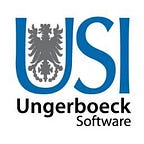PRESERVE THE FUTURE OF TRADE SHOWS
In the broadest sense, virtualization is the creation of something (most commonly by using software) that doesn’t actually exist but has the same effect as a physical object. In computers, virtualization software does the same work as networks and servers, but cheaper, faster, and better. In virtual reality, applications create the illusion of a physical world, but aren’t really anything more than pixels on a screen.
THE BIRTH OF VIRTUALIZED TRADE SHOWS
A virtualized trade show is, similarly, a digital representation of the activities, profiles, behaviors, and engagement of the trade show participants. It involves the creation of a virtual layer — a patchwork of data points — placed (virtually) over the trade show floor where information is free to roam and the data can be instantly harvested and put back to use to create a more efficient environment in which to do business.
The virtual layer is formed by locking down the network, i.e. making sure that wireless connectivity is guaranteed, tagging all of the objects and people inside the show, and (for now) integrating all of the best-of-breed software and hardware that powers the show to obtain real-time access to and control of all of the data that is being created. Is this the future of trade shows?
THE MAGIC OF VIRTUALIZATION
Once the virtual layer is under the control of the technology provider or “virtual layer manager” (and the organizer), the true potential could surface:
Attendees could be continuously nurtured along a journey of his or her choosing using location and behavioral tools (and who knows maybe some artificial intelligence at some point) to suggest or locate the information, exhibitors, and peers that are of unique interest to them.
Exhibitors could identify and locate potential buyers from individuals on the trade show floor, score them and pivot their presentations based on what they know about their prospects courtesy of the virtual layer. Exhibitors could even ascertain an attendee’s ETA to the booth for his appointment.
Organizers could observe and learn which programming, layouts, on-floor activities, booth locations, individual attendees, booth personnel, and contractor personnel are effective. And to the extent that on-floor interactions can be digitized and harvested by the virtual layer, they can be monetized.
Contrary to what the term “virtualization” implies, the concept of a virtual layer for trade shows is not a replacement of the face-to-face interaction. Virtualization simply removes the unknowns (who to meet, how to get there, what products are the best fit, who is on the show floor, etc.) so that the interactions are intentional, fruitful, memorable, and efficient.
A TEENSY PROBLEM
The virtual layer doesn’t exist yet. But as more physical processes, from registration to navigation to engagement, become digitized, a new fabric of data is being created. The next step will be to layer the fabric (virtually) over the trade show floor; allow participants to “touch” it when they need to; and deploy it as the backbone of what will become an intelligent trade show. Virtualization will give trade shows the same digital capacity as other marketing mediums, which along with the added value and privileged position of face-to-face interactions will help ensure that they remain a dominant marketing channel.
